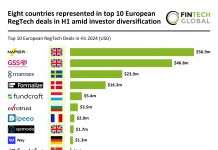With the world becoming ever more digitalised, the need for strong KYC and AML practices has never been more important. How do they differ internationally?
Clausematch GRC professional Eugenie Casier remarked, “KYC legislation is very much siloed. Different markets have different levels of maturity and different regulators will stress different accents or have a wide range of priorities, such as – do you value consumer rights before promoting competition or stimulating innovation?”
The company said that how a government body chooses to intervene in markets will also vary, giving the example of the UK – whose regulators will often seek outcomes from companies, while US regulators are more binary with clearer rules.
Casier continued, “Regulation in general is a living, ever-evolving concept, responding to changing environments, technological advancements and developing trends. The fact that it is not static, means companies must be able to pivot to translate a regulation into business operations.
“KYC processes are not just a download of those varied local legislations. They are formed by successfully interlinking various, at times conflicting, bodies of legislation that you have to fulfil together with your customer. It is an interesting space where you are trying to have an efficient answer to an ever growing number of fraud attempts whilst generating minimal friction for your customer.
“Doing this while making an interpretation of the different local KYC regulations and correctly understanding the friction with other topics such as privacy, that also vary based on the market you are serving is not an easy task.”
According to Casier, fraud cases present a sizeable cost to financial service providers, but are ‘no match’ for the fines regulators globally are imposing on financial service providers that are not meeting their obligations under KYC regulation.
She concluded, “It is a huge challenge to understand the complex space so that small players are finding it hard to enter multiple geographies and certain industries such as cross-border payments are really only open to a few large institutions because of the number of regulations to keep track of.”
Eventus director of regulatory affairs David Griffiths remarked, “We are seeing a growing trend, driven by digital asset venues, to incorporate trading activity into the KYC process. While the need for real-time screening and traditional and electronic KYC methods continues, the feedback loop from trading activity needed for ongoing due diligence has suffered from the lack of automation.
“This is partially due to data and operational challenges existing between the front, middle and back office. It also stems from issues with using the correct toolset to interrogate data, generate signals and utilize as input to client activity profiles or identification of hidden relationships.”
Anthony Quinn – CEO and founder of Arctic Intelligence – added, “Whilst KYC processes must adopted by regulated businesses must adhere to common international standards as outlined by the Financial Action Task Force (FATF) there are many nuances to this and localised domestic standards meaning this can represent a material challenge to many businesses.
“Most major firms are looking for holistic KYC solutions that can identify and verify the identity of individuals and non-individuals alike and through multiple digital channels and sources at very fast speeds and that requires a significant investment in technology spend meaning only the most capitalised and innovative solution provides will survive and thrive”.
Founder and CEO of Sigma Gabrielle Haddad added, “Given the complexities of KYC on a global level, what’s key for those looking to implement processes and maintain efficiency is to work with vendors that have highly configurable and flexible solutions that adapt to shifting regulatory environments.”
Another key area in KYC is eIDAS. Electronic IDentification said, “Before eIDAS, the operations EU customers could make online were limited by the need to personate themselves in front of an agent at the company’s branch office. The company was obliged to conduct an identity verification face-to-face and request a handwritten signature to ensure compliance with the highest legal requirements.
“With eIDAS, the European regulation for electronic identification and trust services, that changed since it formally regularises the use of biometric solutions, such as identity verification by video streaming, for the identification process required for the considered high-risk operations.
“Thanks to this update in the regulation and the appearance of disruptive solutions that avoid the need for users and clients to be present to carry out the strong identification needed for high-risk operations, the KYC process can be performed from a remote digital channel. In addition, it adds a new level of security and legal enforceability, confirmed by a Conformity Assessment Body.
“This way, eIDAS acts as a unifier of the eTrust market, allowing FinTech companies to fully connect national and European electronic services and identification systems, making financial products digitally available for customers worldwide. Thus, this connection will increase the interoperability of EU users, who will be able to carry out all kinds of operations online from anywhere at any time. This represents a unique opportunity that FinTech companies must take advantage of.
“In conclusion, with the regularisation of biometric solutions, such as identity verification by video streaming, FinTech can take a significant step forward and respond to the growing demand to adapt the regulations to the technological innovations that are pushing forward in all sectors by implementing a faster client identity verification and onboarding solution that also complies with the strictest regulatory standards.”
Copyright © 2022 FinTech Global











